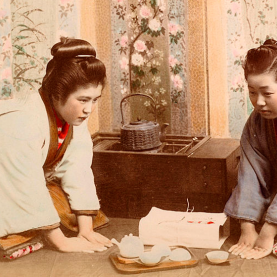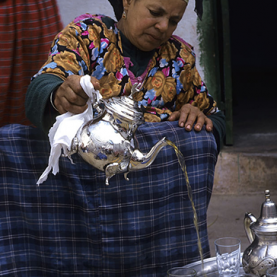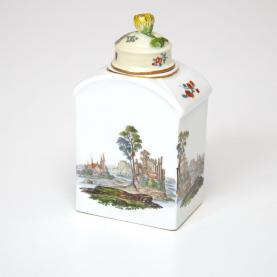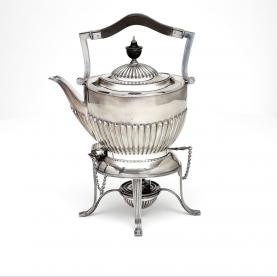The history of tea
An ancestral tradition in China, tea was to become the ultimate beverage in the Far East. Although less popular in Latin countries, Europe showed great enthusiasm for tea, which led to the creation of luxurious accessories and the opening of tearooms.
An ancestral tradition
Chinese texts dating back several centuries before the Common Era mention a drink made from bitter plants, presumably tea, which was reserved exclusively for the Imperial Court. By the second century of the Common Era, Buddhist monks had discovered tea’s stimulating properties and contributed to its cultivation and development. A few centuries later, tea had become a popular drink and was widely available. The art of preparing and drinking tea evolved to become a real ritual and teahouses began to appear. They would go on to play a key social role.
The reputation of this prestigious beverage gradually seeped beyond China’s borders. Tea was already being exported to Tibet in the 7th century and then to Korea. Around this time, Japan also discovered it, but it was only in the 12th century that the custom of drinking tea spread and gained wider acceptance. The tea ritual would go on to reach its peak in Japan.
Europeans had already heard about tea from missionaries returning from the Far East. However, it was the Dutch who were the first to bring some back at the beginning of the 17th century. A few decades later, it had seeped throughout the rest of Europe.
The perception of tea in Europe
Tea had exotic charm and was credited with medicinal properties. However, its reception varied from country to country. It proved to be less popular in Latin countries. Coming from the Far East, it complemented the ornamental objects of Chinese origin or inspiration that were very much in fashion in the 18th century. It appealed particularly to the aristocracy and the privileged classes and soon became an integral part of society life. Later, it would become an elegant, refined beverage for upper middle class ladies. The rest of the population considered tea as ‘posh’ or as a medicinal drink, so it was rarely consumed.
By contrast, the Dutch and Germans adopted it immediately. The British developed a passion for tea and quickly became a tea-drinking nation. It was then Russia’s turn to succumb to its charms, with the samovar becoming the centrepiece in Russian homes.
The art of serving and drinking tea gradually developed all over Europe. Initially, it was seen as particularly exotic to drink it in Chinese porcelain cups that were brought back in the same ships as the tea. Then tea services started tp be made in Europe and increasingly luxurious accessories were created. It is said that Louis XIV had his tea prepared in a teapot made of gold.
Furthermore, a new custom emerged in the second half of the 19th century. The tradition of afternoon tea, which originated in Great Britain, spread throughout Europe and tearooms opened in all major towns. These were places that women could frequent quite freely, unlike cafés, which were considered unbefitting.
Black tea
For a very long time, Europeans only drank black tea, initially imported from China, then from India and Ceylon. Several perfumed teas were also enjoyed, with Earl Grey flavoured with bergamot and jasmine the most popular. Contrary to oriental tradition and at the risk of altering the subtle flavours, sugar and a dash of milk were added.
A legend
Tea is reputed to have been discovered in China in 2373 BCE, by Emperor Shen Nong, the father of agriculture and medicine. He travelled the country looking for new medicinal plants. One day, feeling unwell, he decided to rest under a tree. He became thirsty and boiled some water, as was customary. A few leaves from the tree fell into the cup but he drank it anyway, finding it slightly bitter but richly flavoured. He immediately felt restored: tea as a beverage with curative properties was born.
CHA SANGMANEE, Kitti, DONZEL, Catherine, MELCHIOR-DURAND, Stéphane, STELLA, Alain, 1996. L’ABCdaire du thé. Paris : Flammarion.
YiI, Sabine, JUMEAU-LAFOND, Jacques, WALSH, Michel, 1990. Le livre de l’amateur de thé. Paris : Robert Laffont.
PERRIER-ROBERT, Annie, 1999. Le thé. Paris : Éditions du Chêne..
BUTEL, Paul, 1989. Histoire du thé. Paris : Éditions Desjonquères.
ALIMENTARIUM, Vevey, 1997. Manger en Chine.
TOUSSAINT-SAMAT, Maguelonne, 1997. Histoire naturelle et morale de la nourriture. France : Larousse.










